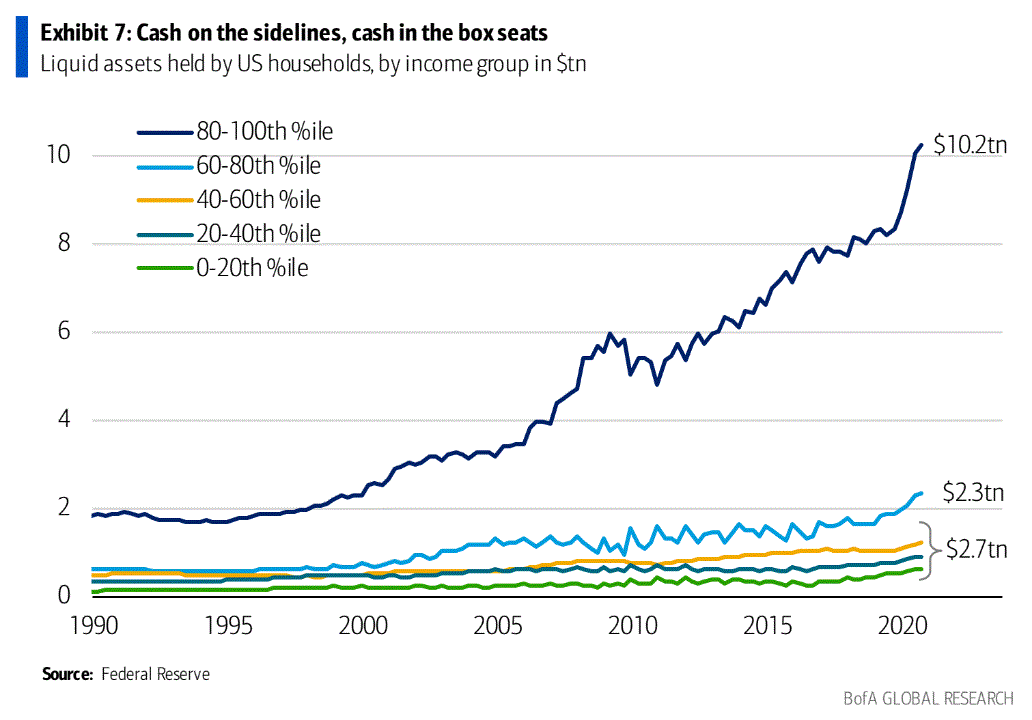More thoughts from BofA along the lines of my own today. How long will the US growth, yield and inflation leadership last? In their view, not long at all as consumers slump into the “fiscal liquidity trap” and then it’s back to lowflation with a bullet. First up, the stimulus has been very poorly targeted:
The most important question in our view for investors in 2021: what will US households do with their extra money as the economy fully reopens? The consensus is that the record “savings glut” will be spent. Is the consensus right? We see two possible outcomes:
- Big Spending: a sustained real-economy consumption boom, higher wages & services inflation; bullish for GDP, but bearish for stocks because of 1. Fear of Fed tightening and
- “Mere Rotation”…recent market action shows it’s a zero-sum environment where pro-inflation trades are financed by selling down deflation assets (growth stocks, bonds, EM) as institutional cash levels are low;
- Big Saving: after an initial surge of leisure & services spending, consumption reverts to trend as structural forces of stagnation reassert themselves; households keep cash directed to saving (cash, debt payments, financial assets), Fed fears subside; net bearish GDP given supreme expectations, but more bullish for markets.


